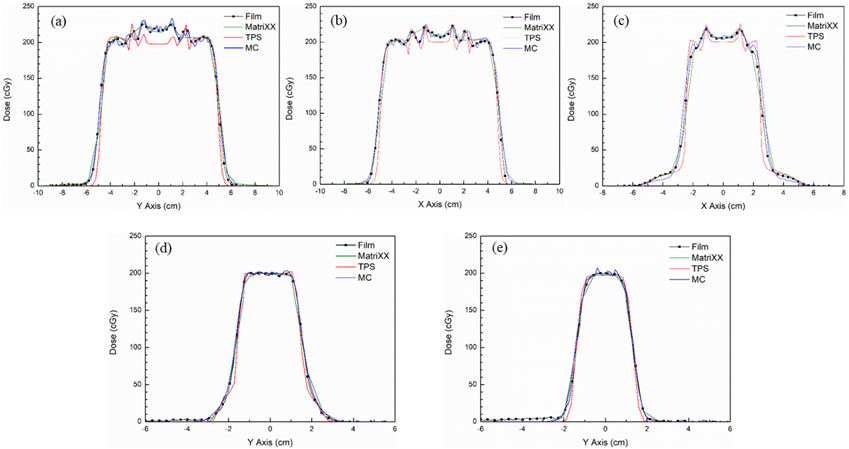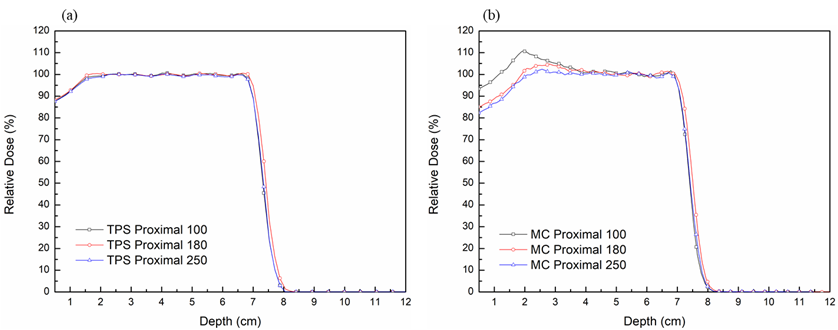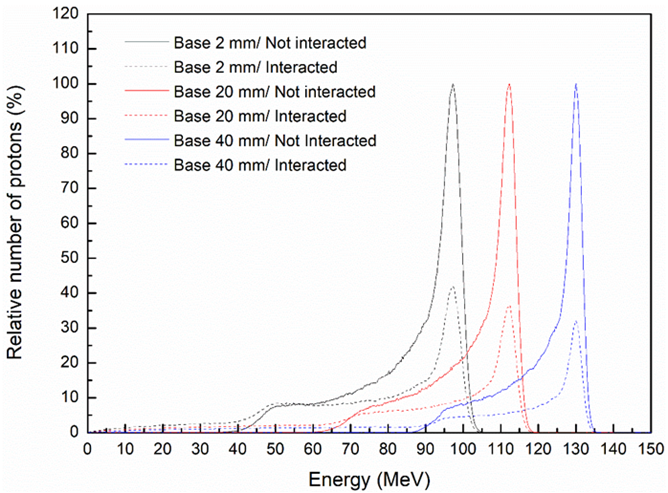글로벌 연구동향
의학물리학
- [J Appl Clin Med Phys.] Evaluation of the dosimetric effect of scattered protons in clinical practice in passive scattering proton therapy 양성자 치료 시 산란 양성자에 대한 선량학적 영향 평가 연구
국립암센터 / 김찬규, 이세병*
- 출처
- J Appl Clin Med Phys.
- 등재일
- 2021 Jun
- 저널이슈번호
- 22(6):104-118. doi: 10.1002/acm2.13284. Epub 2021 May 25.
- 내용
-
Abstract
The present study verified and evaluated the dosimetric effects of protons scattered from a snout and an aperture in clinical practice, when a range compensator was included. The dose distribution calculated by a treatment planning system (TPS) was compared with the measured dose distribution and the dose distribution calculated by Monte Carlo simulation at several depths. The difference between the measured and calculated results was analyzed using Monte Carlo simulation with filtration of scattering in the snout and aperture. The dependence of the effects of scattered protons on snout size, beam range, and minimum thickness of the range compensator was also investigated using the Monte Carlo simulation. The simulated and measured results showed that the additional dose compared with the results calculated by the TPS at shallow depths was mainly due to protons scattered by the snout and aperture. This additional dose was filtered by the structure of the range compensator so that it was observed under the thin region of the range compensator. The maximum difference was measured at a depth of 16 mm (8.25%), with the difference decreasing with depth. Analysis of protons contributing to the additional dose showed that the contribution of protons scattered from the snout was greater than that of protons scattered from the aperture when a narrow snout was used. In the Monte Carlo simulation, this effect of scattered protons was reduced when wider snouts and longer-range proton beams were used. This effect was also reduced when thicker range compensator bases were used, even with a narrow snout. This study verified the effect of scattered protons even when a range compensator was included and emphasized the importance of snout-scattered protons when a narrow snout is used for small fields. It indicated that this additional dose can be reduced by wider snouts, longer range proton beams, and thicker range compensator bases. These results provide a better understanding of the additional dose from scattered protons in clinical practice.
그림 1. 측정된 선량 프로필(EBT3 필름, MatriXX)과 치료 계획 시스템(TPS) 계산 결과 및 몬테카를로(MC) 시뮬레이션 결과와의 비교: (a) y-axis / 16mm 측정 깊이 (b) x-axis / 30mm 측정 깊이 (c) x-axis / 40 mm 측정 깊이 (d) y-axis / 56 mm 측정 깊이 (e) y-axis / 69 mm 측정 깊이

그림 2. Snout의 사이즈(100mm, 180mm, 250mm)에 따른 중심축에서의 산란된 양성자 빔의 선량 변화 비교: (a) TPS 계산 결과, (b) 몬테카를로 시뮬레이션.

그림3. Range compensator의 base thickness 변화에 따른 노즐을 통과하면서 산란되는 양성자 수의 비교
Affiliations
Chankyu Kim 1 , Yeon-Joo Kim 1 , Nuri Lee 2 , Sang Hee Ahn 3 , Kwang Hyeon Kim 4 , Haksoo Kim 1 , Dongho Shin 1 , Young Kyung Lim 1 , Jong Hwi Jeong 1 , Dae Yong Kim 1 , Wook-Geun Shin 5 , Chul Hee Min 6 , Se Byeong Lee 1
1 Proton Therapy Center, National Cancer Center Korea, Gyeonggi-do, Republic of Korea.
2 Department of Radiation Oncology, National Medical Center, Seoul, Republic of Korea.
3 Department of Radiation Oncology, Yonsei Cancer Center, Yonsei University College of Medicine, Seoul, Republic of Korea.
4 Department of Neurosurgery, Inje University Ilsan Paik Hospital, Gyeonggi-do, Republic of Korea.
5 Department of Radiation Oncology, Seoul National University Hospital, Seoul, Republic of Korea.
6 Department of Radiation Convergence Engineering, Yonsei University, Gangwon-do, Republic of Korea.
- 키워드
- aperture; passive scattering; proton therapy; range compensator; scattered protons; snout.
- 연구소개
- 양성자 치료에서는 오래전부터 지금까지 이용되고 있는 passive scattering 양성자 빔과 최근 개발된 pencil beam scanning 양성자 빔이 이용되고 있습니다. 기존의 passive scattering 양성자 빔에서는 치료 빔을 만드는 과정에서 snout 및 치료용 블록에서 일부 양성자 빔이 산란되는데, 현재의 치료 계획 시스템은 이 산란된 양성자 빔에 의한 선량을 미처 반영하지 못하는 한계가 있습니다. 이로 인해 산란된 양성자 빔에 의해 환자가 받을 수 있는 추가적인 피폭에 대해서 오래전부터 논의가 진행되었지만, 실제 치료 시스템에서 측정한 데이터와 이에 대한 분석이 아직 부족하였습니다. 본 연구 논문은 기존의 치료 계획 시스템에서 반영하지 못한 산란된 양성자 치료빔에 의한 선량 영향을 실제 환자 치료 환경에서 측정, 평가하였고, 이를 분석하여 치료용 블록 뿐 아니라 치료 노즐의 snout에서 기여하는 바를 밝혀내었습니다. 더 나아가 어떤 케이스에서 산란된 양성자 빔의 영향이 커지는지 분석하고, 이를 줄일 수 있는 현실적으로 응용가능한 방법들을 제시하였습니다.
- 덧글달기










편집위원
환자치료를 위한 collimator에서 산란된 빔에 대한 전산모사와 측정을 통하여 보다 정밀한 치료선량 계산이 가능하도록 함
산란에 의하여 추가적으로 발생되는 선량에 의한 환자 손상을 감소시키거나, 유효선량 계산에 반영하여 부작용을 최소화하는 치료 계획을 세울 수 있음으로써 보다 정밀한 방사선의학으로 한 단계 발전을 가져올 것으로 보여짐
연구를 통하여 습득한 시뮬레이션 기법은 가속기 운전 전반에 활용하여 빔 손실에 의한 영향, 방사선발생량 등에 대한 연구로 확장이 가능
2021-08-03 17:30:52